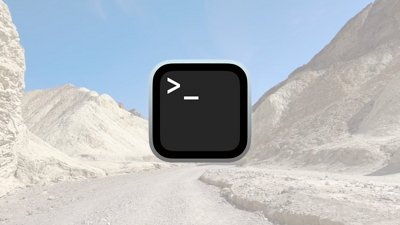A pair of Apple patent filings published Thursday reveal ongoing work on perfecting the mobile computing experience, including an intuitive continuous handwriting recognition system and a pair of earphones that snap together magnetically for easy stowage.
Apple's "Continuous Handwriting UI," as published by the U.S. Patent and Trademark Office, details a novel handwriting recognition and input method that appears custom built for business professionals and students.
While existing handwriting input methods exist, including limited language-centric tools built in to iOS, most apply unintuitive interfaces that interrupt a user's normal writing rhythm. The root of the problem lies in timing, specifically when a UI should clear a handwriting input area of previously entered text.
Apple's invention describes a designated handwriting input area that allows users to write continuously without stopping, just as they would with paper and pencil. In one embodiment, the system automatically recognizes and clears handwriting dynamically, while another method partially fades previously entered text as a user writes. Thus the user can return to the left-most (or right-most, depending on language) and start writing on a fresh piece of screen.
Instead of clearing or erasing an input area based solely on a timer, Apple's solution relies on the location of subsequent user input. For example, the system might clear or partially fade a character when a user writes out three subsequent letters, or when writing reaches a predefined point relative to the first written character.
Other embodiments include virtual keys responsible for character deletion, re-display and other input needs. Apple notes a finger or stylus can be used as an input device, suggesting continued work toward a branded writing implement. In January, well-connected analyst Ming-Chi Kuo predicted Apple would launch a simple stylus product for use with a an expected 12.9-inch iPad, a rumor seconded by an AppleInsider source in May.
Apple's continuous handwriting input patent application was first filed for in September 2014 and credits Deborah E. Goldsmith and Karan Misra as its inventors.
Also published Thursday, Apple's application for "Earphones with left/right magnetic asymmetry" describes a design that secures left and right earbuds via magnetic attraction for easy storage. Additionally, touch sensors disposed within the product chassis determine when the buds are in contact, automatically turning off any audio processing operations being conducted on the host device.
Since earphones rely on magnetic forces to operate, commonly a voice coil and permanent magnet setup, joining two separate earbuds using existing internal magnet structures sounds like a simple operation. However, for purposes of audio uniformity and continuity of manufacturing, both left and right earbuds share internal designs, including magnet polarity and voice coil winding, making the invention difficult to implement.
Apple proposes an asymmetrical design in which left and right earbuds have opposite magnetic assembly polarities, causing them to attract. In order to achieve the same acoustic effect from an electric audio signal, each bud needs to react to an audio signal in the same way, meaning a few internal changes are required.
In one embodiment, positive and negative audio signals are connected to first and second voice coil terminals in one earbud. Terminal connections are switched in the second earbud to reverse voice coil current, allowing the magnetically opposed systems to react identically to the same audio signal. Alternatively, voice coil winding can be reversed in one earbud while leaving terminal connections untouched to achieve the same result.
Finally, a touch detector built in to one or both earbuds sends a signal to a host device's onboard audio processor when it determines a user to have joined the pair for storage. In response, the device can shut down processing, cut off power to audio amplifiers or perform other operations.
Apple's magnetically joinable earphone patent application was first filed for in January 2014 and credits Yacine Azmi and Esge B. Andersen as its inventors.
 Mikey Campbell
Mikey Campbell










-m.jpg)






 Chip Loder
Chip Loder
 Mike Wuerthele
Mike Wuerthele
 Malcolm Owen
Malcolm Owen

 Amber Neely
Amber Neely
 William Gallagher
William Gallagher



-m.jpg)






21 Comments
The author is correct. Existing handwriting input methods do exist,
That is not really correct. You can continuously handwrite on the Newton devices. With the 1.x series the CPU takes a bit to catch up, but the StrongARM in the 2x00 series handles it much better. However, much of the Newton patents are expiring, so my guess is this is a slight tweak to re-ensure protection.
Handwriting input is so 1990s.
Haven't we come to the conclusion that typing on a mobile device is more efficient and faster than handwriting input?
[quote name="am8449" url="/t/187130/apple-invents-continuous-handwriting-input-method-magnetically-linkable-earphones#post_2746021"]Handwriting input is so 1990s. Haven't we come to the conclusion that typing on a mobile device is more efficient and faster than handwriting input? [/quote] Heck [I]handwriting[/I] is so 1990's lol, I can hardly do it anymore!
Heck handwriting is so 1990's lol, I can hardly do it anymore!
Haha. Have you tried writing cursive lately? I get so lost in all the loops...